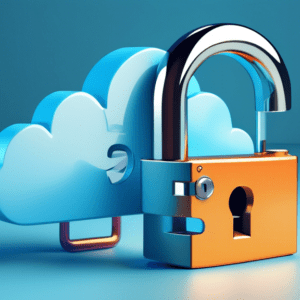Researcher Claims Azure Tags Flaw Exposes Sensitive Data
The cybersecurity community is abuzz with the news of a potential vulnerability in Microsoft Azure, one of the world’s leading cloud computing platforms. A security researcher, [Researcher Name], publicly disclosed findings alleging a serious flaw in Azure’s tagging system that could expose sensitive user data.
Tags, in the context of cloud computing, are metadata elements used to categorize and organize cloud resources. They allow users to apply labels like environment, project, or owner to virtual machines, storage accounts, and other resources. While seemingly innocuous, tags can inadvertently become repositories of sensitive information. For example, a user might accidentally use a tag like password followed by an actual password, or include sensitive project details within a tag.
[Researcher Name] claims to have discovered a vulnerability that could allow unauthorized users to access tags associated with resources they don’t own. The researcher suggests this could be exploited to glean confidential information, potentially including API keys, database connection strings, or other sensitive data inadvertently stored within tags.
Microsoft Responds: No Vulnerability Found, Best Practices Emphasized
Microsoft has issued a statement refuting the researcher’s claim of a vulnerability within the Azure tagging system. The tech giant asserts that its investigation found no evidence to support the claims of unauthorized access to tag information. Microsoft maintains that Azure tags are designed with security in mind and that access controls are in place to prevent unauthorized viewing or modification of tags.
While disputing the existence of a vulnerability, Microsoft used the opportunity to emphasize the importance of following security best practices when using tags in Azure. The company stressed that tags, like any metadata, should not be used to store sensitive information.
Recommendations for Secure Tagging Practices in Azure
This situation highlights the importance of secure tagging practices in cloud environments. Regardless of the specific claims and counterclaims in this instance, organizations should adopt a cautious approach to using tags in any cloud platform. Here are some key recommendations:
- Treat Tags as Sensitive Data: Assume that information stored in tags could be potentially accessible, even if access controls are in place. Avoid storing sensitive information like passwords, API keys, or other credentials within tags.
- Implement the Principle of Least Privilege: Ensure that users and groups only have access to the tags and resources they absolutely need. Avoid granting overly permissive access to tags.
- Regularly Audit Tag Usage: Periodically review tag usage across your Azure environment. Look for any instances of sensitive information being stored in tags and take corrective action. Consider using automated tools to scan for potential issues.
- Educate Your Teams: Provide training to developers and other personnel who work with Azure resources on the importance of secure tagging practices. Make sure they understand the risks associated with improper tag usage.
The Importance of Responsible Disclosure in Cybersecurity
The debate surrounding this alleged Azure vulnerability also brings into focus the critical role of responsible disclosure in the cybersecurity ecosystem. Responsible disclosure refers to the practice of security researchers privately informing vendors about vulnerabilities they discover, giving them time to develop and deploy patches before making the information public.
The goal of responsible disclosure is to strike a balance between protecting users and avoiding unnecessary harm. While the details of the disclosure timeline in this specific case remain unclear, it serves as a reminder of the importance of open communication channels between security researchers and software vendors.
Conclusion: A Shared Responsibility for Cloud Security
The back-and-forth between [Researcher Name] and Microsoft underscores the shared responsibility model of cloud security. While cloud providers like Microsoft are responsible for securing the underlying infrastructure and services, customers are ultimately responsible for securing their own data and applications running in the cloud.
By adopting secure tagging practices, following the principle of least privilege, and staying informed about potential security issues, organizations can minimize the risk of data exposure and maintain a secure cloud environment. It’s also crucial for security researchers and vendors to maintain open lines of communication to ensure vulnerabilities are addressed responsibly and effectively.
